CMMC Practice SC.L2-3.13.14 – Voice over Internet Protocol: Control and monitor the use of Voice over Internet Protocol (VoIP) technologies.
Links to Publicly Available Resources
This document provides assessment guidance for conducting Cybersecurity Maturity Model Certification (CMMC) assessments for Level 2. This document provides techniques and procedures for the secure use of Voice over Internet Protocol (VoIP) within the Department of Homeland Security (DHS) Information Technology (IT) Program. It is published as an Attachment to the DHS 4300A Sensitive Systems Handbook, which is based on DHS Sensitive Systems Policy Directive 4300A. This publication from the FCC provides answers to FAQs about VoIP. This special publication from NIST provides guidance on Voice Over Internet Protocol (VoIP). This paper examines the vulnerabilities of VoWiFi calling, assesses what common and less well-known attacks are able to exploit those vulnerabilities, and then proposes technological or procedural security protocols to harden telephony systems against adversary exploitation. This paper focuses on these VoIP specific security threats and the countermeasures to mitigate the problem. This article focuses on key aspects of VoIP security monitoring and management.
Discussion [NIST SP 800-171 R2]
VoIP has different requirements, features, functionality, availability, and service limitations when compared with the Plain Old Telephone Service (POTS) (i.e., the standard telephone service). In contrast, other telephone services are based on high-speed, digital communications lines, such as Integrated Services Digital Network (ISDN) and Fiber Distributed Data Interface (FDDI). The main distinctions between POTS and non-POTS services are speed and bandwidth. To address the threats associated with VoIP, usage restrictions and implementation guidelines are based on the potential for the VoIP technology to cause damage to the system if it is used maliciously. Threats to VoIP are similar to those inherent with any Internet-based application.
NIST SP 800-58 provides guidance on Voice Over IP Systems.
Further Discussion
Controlling VoIP technologies starts with establishing guidelines and enforcing the appropriate usage that is described in organizational policies. Monitoring should include the users’ activity for anything other than what is permitted and authorized and detection of insecure or unauthorized use of the VoIP technology. Security concerns for VoIP include eavesdropping on calls and using ID spoofing to impersonate trusted individuals.
Selecting a solution that can encrypt VoIP traffic is helpful in maintaining the confidentiality and integrity of the voice data.
